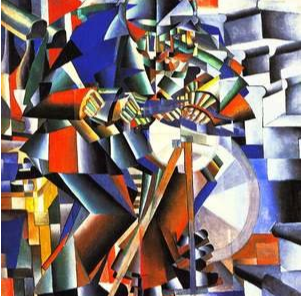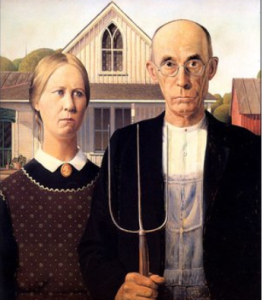
Famous Artist Names Of the 20th Century That You Must Have Heard Of
The 20th century was significant in art history. Through it, we learned that the artist is not just a creator but also an interpreter of the world around them. The entire art world was revolutionized as modern concepts challenged traditional art forms.
Cubism, Impressionism, and Abstract Expressionism were some of the most important art movements in the 20th century. In addition, artists such as Vincent van Gogh, Pablo Picasso, and Jackson Pollock ushered in new aesthetics and changed the way people viewed the art world today.
In today’s article, we will talk about some of the most famous and prominent names of the artists of the 20th century. The work of these artists has shaped the world of art for generations and thus cannot be underestimated.
Kazimir Severinovich Malevich
First on the list is Ukrainian-Russian avant-garde painter Kazimir Severinocivh Malevich. Born in 1879, Kazimir Severinocivh Malevich was a rebel in the traditional art world. He went against the conventions of painting and created his style, Suprematism.
Kazimir’s paintings like White on White and Black Square on White Ground came out in the mid-1910s. With their super unconventional style of abstraction, these fascinating paintings by artist name were able to establish Kazimir as the rebel painter and make a name for himself in the modern art world.
Kazimir Malevich believed art should be purely aesthetic, free from all social and political content. Therefore, it is found that Kazimir’s arts were found to be solely focused on lines, shapes, and colors.
As he grew older, Malevich felt compelled to abandon his abstract art in favor of figurative painting. In his later years, the artist’s work represented both subjects and execution; these works included Haymaking (1930) and Running Man (1932).
Pablo Picasso
Next on the list is the greatest One of the most significant painters of the 20th century, Pablo Picasso, had a substantial impact on major art movements of his time. Picasso was born in Spain in 1881 to a respected artist; Picasso spent most of his life in France.
As a child, Pablo Picasso was engaged in learning how to paint under his father’s tutelage. At 13, Picasso enrolled in the School of Fine Arts in Barcelona, where his father taught art classes. Throughout his lifetime, Pablo Picasso was a prolific artist and produced nearly 20,000 paintings, drawings, and sculptures.
Like any other artist, the Spanish maestro also began his career with classical and traditional styles. However, with time his style of painting evolved, and later in his life, he co-founded Cubism. An abstract style of painting whose subject matter is broken up into fragments and rearranged, Cubism was denounced for its non-traditional style by the art world.
Pablo Picasso was known to be a rebel in the art world, and he continued painting until his death in 1973. Among his thousands of masterpieces, “Guernica,” “The Weeping Lady,” “Woman With a Mandolin,” and “Self Portrait” are some of the most famous ones.
Pieter Cornellis Mondriaan

Wikimedia
Pieter Cornellis Mondriaan, better known as just Piet Mondriaan, was one of the most important and influential artists of the 20th century. Known for his initial work in abstract art, he developed a unique style that emphasized verticals and horizontals and produced compositions based on geometric shapes adorned only by primary colors.
While he is best known for his abstract paintings made from squares and rectangles, Piet Mondrian started painting realistic scenes. He especially liked painting trees, making them appear strong, blocking shapes. After a few years, Mondrian began producing more geometric images that leaned towards abstraction.
Mondriaan termed this unique style, Neoplasticism, which means “New Art.” Before finding Neoplasticism, Mondriaan began his works in Luminism and Cubism. Mondriaan is also credited for co-founding the influential De Stijl movement in the early 1920s, along with his fellow artist Theo van Doesburg.
The artist’s goal was the creation of a purer, non-representational abstraction, which aimed to express beauty through design and composition. “Broadway Boogie Woogie” is often considered to be Mondriaan’s most famous painting – this masterpiece represents Mondriaan’s pictorial vocabulary of lines, squares, and primary colors.
Grant Wood

Grant Wood was an American painter and prominent exponent of Midwestern Regionalism, an art movement that boomed in the United States in the 1930s. Born in 1891 in Iowa, he was one of America’s foremost illustrators for over 40 years.
His magnificent landscapes and country scenes capture the simplicity and honesty of the rural and native Midwest. Before getting into the art world, Wood worked as an apprentice at a local metal shop in Cedar Rapids.
During his visits to Europe between 1922 and 1928, Grant Wood studied multiple art styles, including Impressionism and Post-Impressionism. But the Flemish painter Jan van Eyck had the most notable influence on him.
Grant Wood’s most famous work is probably the American Gothic, which surpassed his fame. This painting was created to put forward a positive statement about rural American values and provide an image of absolute reassurance at a time of hardship and disenchantment brought by the Great Depression. It remains one of the most iconic paintings of the 20th century.
Jackson Pollock
The Guardian
Considered one of the greatest and most famous American painters, Jackson Pollock was a leading figure in the abstract impressionist movement. However, like Pablo Picasso, Jackson Pollock was not particularly well versed in modern art because his artworks rejected traditional religious techniques.
Jackson Pollock is best known for his iconic drip and action paintings, which he began in the 1940s. With this technique, paintings by artist name would drip and throw paints on the canvas without using any brush or tool.
His paintings do not depict any stories or a particular object; instead, they tend to present Pollock’s relationship with the paint and his efforts to manipulate them at any time. As the style progressed, Pollock became an icon for young artists who were passionate about creating artworks that were beyond rigid lines.
“The Deep,” “Full Fathom Five,” and “Convergence” are some of the most famous paintings created by the American maestro. But unfortunately, Pollock’s incredible artistic career was short because of his untimely demise in a car accident at the mere age of 44.
The Bottom Line
To sum up, these were the names of the most famous artists of the 20th century. In addition, the names in the above list are credited for some iconic art movements in art history.



